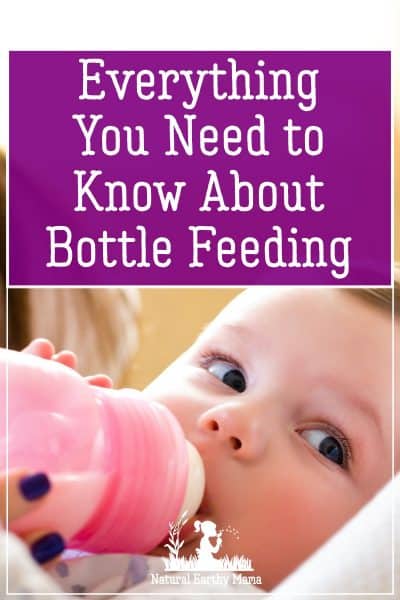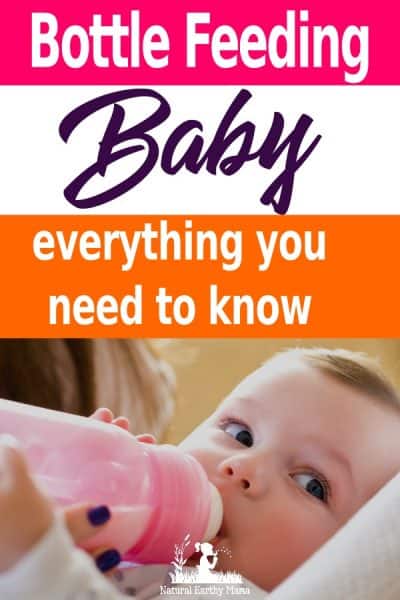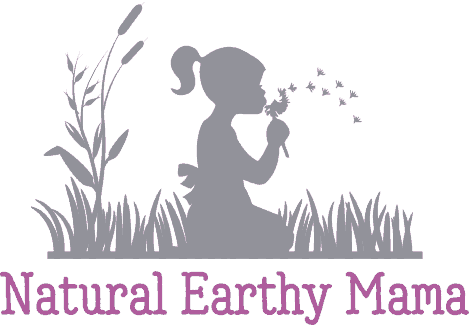 Despite the constant message the ‘breast is best’ there are legitimate reasons to bottle feed your baby.
Despite the constant message the ‘breast is best’ there are legitimate reasons to bottle feed your baby.
Unfortunately, there is a lot of focus put on breastfeeding, and there is not a lot of good information available about bottle feeding baby by choice.
Please read: This information is provided for educational purposes only and is not intended to treat, diagnose or prevent any disease. We encourage you to make your own health care decisions in partnership with a qualified health care professional.
This post contains affiliate links, this means at no extra cost to you, we make a commission from sales. Please read
our Disclosure Statement
Benefits to Bottle Feeding Baby
There are some significant benefits to feeding your baby with a bottle. Whether you chose to bottle feed, or you feel like you have been backed in to the corner and it is your only choice, you are not alone!
Bottle feeding advantages and disadvantages
Bottle feeding benefits:
- You can leave someone else to feed the baby if you leave the house
- You can share night feeds with your partner
- Transition to day care can be smoother
- No sore nipples or blocked milk ducts
- You know how much your baby is drinking
Bottle feeding disadvantages:
- You have to take formula and bottles when you leave the house
- Washing and sterilizing bottles is annoying
- You have to wait with a hungry baby while the milk warms
- Many babies don’t tolerate formula well
- Baby is slightly more at risk for asthma, diabetes and obesity later in life
- The mom guilts
Mama guilt and bottle feeding
Because of societies growing preference for breastfeeding, the mom guilt around bottle feeding is very real.
While people in cafes may complain about a breastfeeding mom, you are just as likely to experience scorn for bottle feeding. You actually cannot win.
A fed baby is a happy baby.
If you are struggling with low milk supply, breast refusal or have an adopted baby, bottle feeding might be your only option. And you know what? Baby will not love you any less if you bottle feed.
A screaming hungry baby is stressful, and you are more likely to experience disrupted (or non existent) bonding, and feelings of anxiety and depression if you have a screaming baby a lot of the time.
A happy baby makes for a happy mommy.
Feed that baby!
How to actually feed a baby with a bottle
Cradle baby
Hold your baby in the crook of your arm, with their head sloping upwards from their body. This will help stop them choking on the faster flow milk, as well as allowing them to look sweetly in to your eyes.
Do not prop the bottle up on a pillow or anything as if your baby chokes, you will not notice, a baby can drown silently while you aren’t watching.
Heating a baby bottle
Babies do best with warm milk. The milk needs to be at blood temperature, not too hot as it can burn the babies delicate mouth.
The safest way to warm milk for a baby it to pour the milk in to the bottle and to put the whole bottle in to a bowl of hot water.
It can take 2-3 minutes or more to warm this way, but you won’t get hot spots through the milk like you would if it was heated in the microwave.
Always shake the milk very well before feeding to distribute the heat and mix the fat through the whole bottle.
Testing the temperature of a bottle
Once you feel the the bottle should be warm enough, give it a good shake and now drop a few drops on to your inner wrist.
The milk should feel just warm, not cold and not hot.
Do not drink from baby’s bottle to check the temperature. Our mouths are quite full of bacteria, what was the point in sterilizing the bottle if you then go and put it in your own mouth?

Sterilizing bottles
Babies under 12 weeks of age need their bottles well washed, and then sterilized. You can either use a sterilizing liquid made with tablets, use a microwave sterilizer, a stand alone bottle sterilizer, or simply boil the bottles and teats for 10 minutes submerged in a pot of water on the stove.
Choosing formula
To be honest, despite what the advertising may lead you to believe, most infant formulas are basically the same.
Infant formula can be casein or whey based. Casein based products keep babies full longer, and are cheaper to produce, but they are harder to digest.
Casein based formula are usually sold as ‘hungry baby’ or over 6 month old formula.
When based formula is much easier to digest, but more expensive to produce. This is usually what they sell as newborn formula.
Then different brands will add special ‘extras’ that they can charge more for. But even the cheapest ones have to pass the minimum standards and will be fine.
Some babies (like mine) do not tolerate commercial formula well, and we used to make our own using goats milk. You can find my goats milk formula recipe here.
Choosing bottles
Bottles are like cloth diapers, everyone has an opinion about which one is better.
Personally, we found these bottles to be the best. Our babies would switch from bottle to breast and back again easily, they have a nice wide mouth to make tipping milk in easier and they are wide, so baby learned to hold them quickly too.
Making formula
Making formula can be fiddly.
You can get all sorts of automation things, but really you just have to use the scoop in the can and the instructions on the outside of the can.
When out and about I found one of these things really helpful. You put your measure of formula in to each division in the cup and click on the lid.
Then you just have to take warm water with you and tip your pre-measured amount in to the bottle and shake it up.
Storing formula
If you are pumping and storing breast milk, it is quite different to storing formula. Breastmilk is alive and full of protective microbiota that keep it safe.
Breast milk you can store for 4 hours at room temperature, 3 days in the fridge and 6 months in the freezer without issue.
Baby formula on the other hand is not alive.
If you make your formula in a sterile bottle, using cooled boiled water, then you will reduce the chance of bad bugs growing in the milk.
Infant formula once made up shouldn’t be left at room temperature for more than one hour.
New formula should be made up fresh for each feed, and left overs discarded from a bottle that has been warmed.
If you choose to make a day’s worth at once (not recommended) do so with cold water, and keep in the fridge until you need to use it. Only warm the amount you will need for each feed.
Milk made in this way may be stored in the fridge for 24 hours before it should be discarded.
Do you have to warm up refrigerated formula?
Not necessarily, those most will find that baby is more happy to drink warmed milk. Some people report less gas and discomfort in babies that are fed warmed milk, but others (especially older babies) are quite happy to drink chilled milk without issue.
Bottle feeding newborn amounts
Day 1: 5-7 ml is about the size of a large marble or a cherry – they will drink little and often!
Day 3: 22-27 ml is about the size of a ping pong ball or a walnut
One week: 45-60 ml is the size of an apricot or plum
One month: 80-150 ml is about the size of an large chicken egg
Babies will not nessacarily stop drinking even when they are comfortably full. This leads to bloating, stomach cramps and spilling excess milk out their mouth.
Babies need to suck, as well as drink. Breastfeeding mothers can do both with their breasts, bottle feeding babies may need a pacifier to allow them to suck without over filling their stomach.
Some babies need to comfort suck much more than others, so this is something you may need to be aware of.
Stages of bottle feeding
Most bottles come with a variety of teats with different sized holes. Start with the smallest hole for a newborn, and if you are planning on feeding both breast and bottle, you can keep them on the newborn sized hole the whole time if you like.
Stage two teats are usually used for exclusively bottle fed babies that are over 4 months old, and the size 3 hole for babies closer to, and over one year of age.
However, if your baby is happy with the slower flow, you can keep them on the small hole as long as you like.
If you swap to a larger hole too fast, baby will struggle to keep up with the flow of milk and may choke, gag, splutter and swallow too much air.
RELATED: Baby wearing, are you doing it safely
Switching from breast to bottle and back again
There is a thing called ‘nipple confusion’. It is something we are all told about if we are breastfeeding and want to use a bottle or a pacifier as well.
To be honest, in all my years of working with moms and babies, I have never actually come across this.
Babies aren’t as dumb as we like to think that they are. If they need two different methods of sucking or swallowing to get food out of different objects, they learn to do so very fast.
The only problem you may have swapping from breast to bottle and back again, is that if your breast has slow flow and the bottle has fast flow, baby will learn very quickly to prefer the bottle.
I trust this has been helpful for you on your journey to growing your happy healthy baby!




